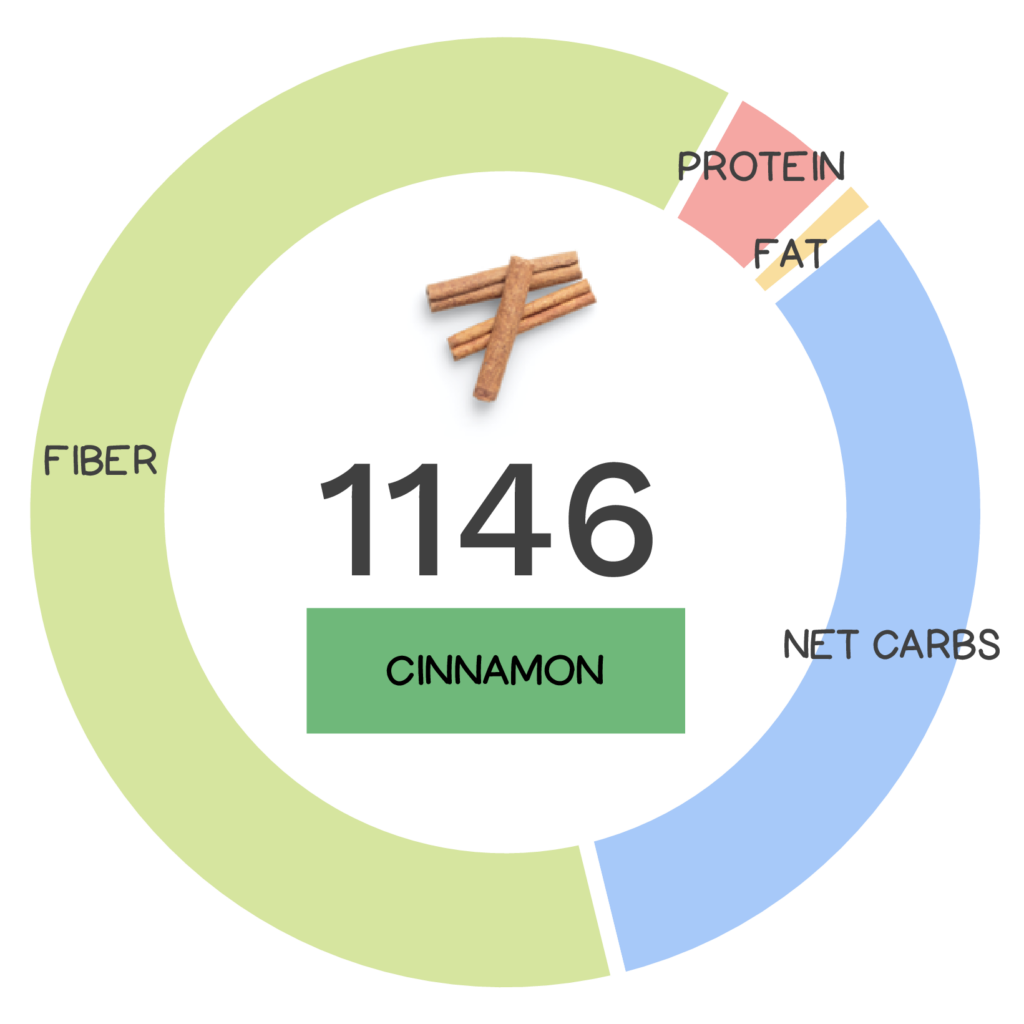
It’s hard to imagine some of our favorite foods without the delightful taste of cinnamon. This spice, commonly used in baking, evokes feelings of warmth and its distinctive flavor is intricately associated with the season of Autumn. Cinnamon pairs perfectly with baked apples, apple cider, squash, sweet potatoes, fancy coffee drinks, pumpkin spice and all things Fall. The characteristic flavor and aroma of this spice (derived from essential oils, most notably cinnamaldehyde) seems to conjure up feelings of comfort and coziness and just the thought of this spice is enough to make your mouth water! Is anyone else suddenly in the mood to bake or is it just me, I may be “barking” up the wrong tree here (Hyuck).
The characteristic flavor and aroma of cinnamon is derived from essential oils, most notably cinnamaldehyde.
Cinnamon is obtained from the inner bark of evergreen trees from the genus Cinnamomum, though only a few species are grown commercially. When harvesting cinnamon, the inner bark is pried off in long rolls and laid out in the sun to dry, where it takes on its signature scrolled form (also known as a quill). There are two main types of cinnamon, Ceylon and Cassia cinnamon. Cassia cinnamon is native to China and is the cheaper variety which can usually be found in your local grocery store (the word ‘cassia’ derives from Hebrew, meaning ‘to strip off bark’). Ceylon cinnamon, native to Bangladesh, India, Myanmar, and Sri Lanka, is considered “true” cinnamon and is a more expensive variety still largely produced in Sri Lanka (formerly called Ceylon).
There are two main types of cinnamon, Cassia (the cheaper variety usually found at the grocery store) and Ceylon cinnamon (the more expensive variety considered “true” cinnamon).
Throughout history, spices have been one of the world’s most important commodities. So much so that the quest for spices (which only grew natively in certain areas) helped shape human civilizations by driving trade and exploration around the globe. Cinnamon was one of the key spices involved in the spice trade. In fact, humans have been using cinnamon for thousands of years as a culinary ingredient and in traditional medicine. It was imported to Egypt as early as 2,000 BC where it was used as a fragrance during the embalming process. The true source of cinnamon was kept secret from the Western world for centuries by spice traders before it was later discovered to come from the bark of trees growing in Sri Lanka. In order to drive up prices and deter competitors, Arabic spice merchants crafted fantastical tales about the origin of their spices and the grueling work it took to collect them. Cinnamon was said to come from the nests of a giant bird called the Cinnamologus, which spice merchants would lure to the ground with chunks of oxen and donkey. When the bird returned to its nest with the meat, the weight would be too much for the nest to hold, causing it to break and fall to the ground where the merchants were waiting to collect it! With that belief, it’s no wonder that cinnamon was highly prized and given to monarchs as gifts, in addition to being extremely expensive – a Roman pound of this spice cost the equivalent of the wage for 50 months labor (that’s over 4 years of work!). Despite its expense, Roman Emperor Nero was said to have burned a year’s worth of the city’s supply at his wife’s funeral! Lucky for us, today cinnamon is not nearly as expensive and despite the fact that only four countries (China, Indonesia, Sri Lanka, and Vietnam) account for 99% of the world’s supply, it is widely available wherever you live!
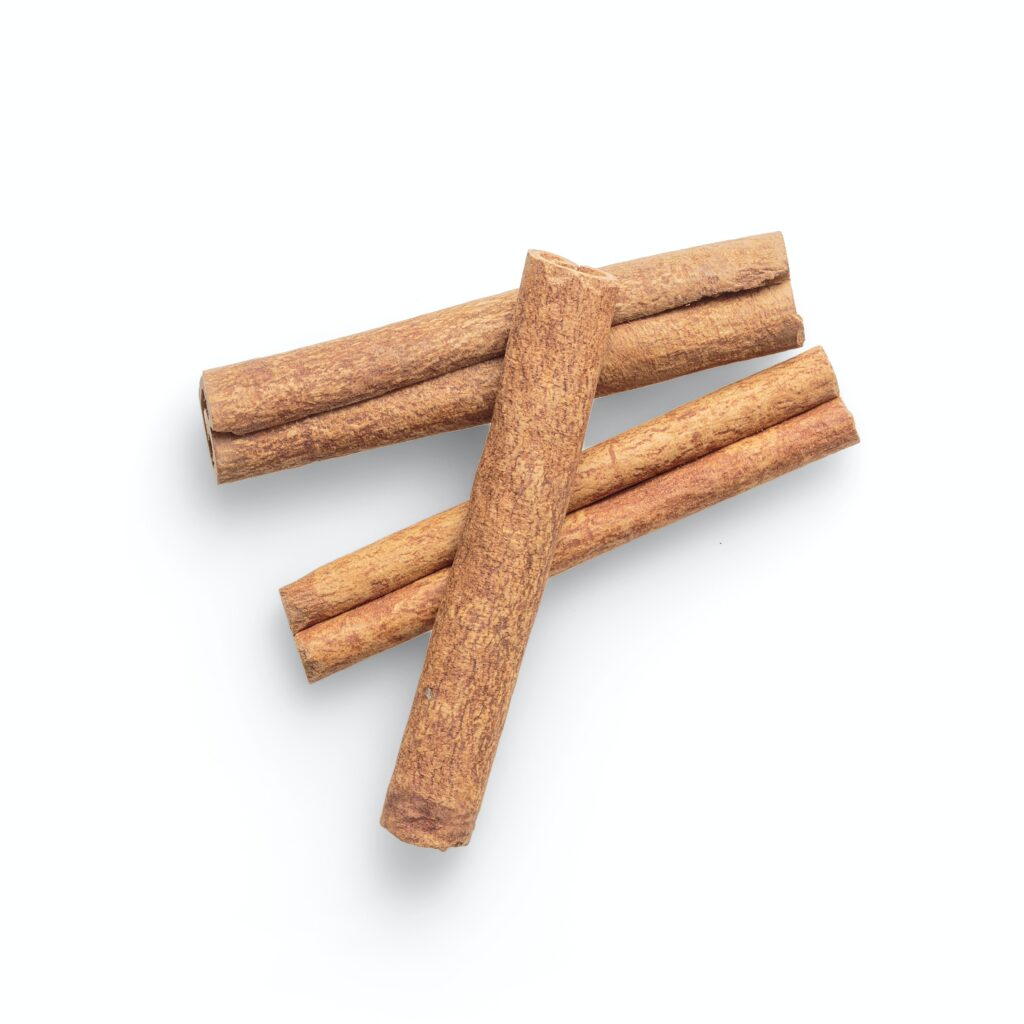
Nutrivore Score for Cinnamon – 1146
Cinnamon has a Nutrivore Score of 1146, making it a super nutrient-dense food! Plus, it is a low-carb food; cinnamon has 2.1 grams of net carbs per serving.
Per serving, cinnamon is a best source (>50% daily value) of manganese and polyphenols; and a good source (10-20% daily value) of dietary fiber.
Ditch Diets. Embrace Nutrients. Start with this FREE Guide.
Sign up for the free Nutrivore Newsletter, your weekly, science-backed guide to improving health through nutrient-rich foods — without dieting harder —and get the Beginner’s Guide to Nutrivore delivered straight to your inbox!

Cinnamon Nutrition Facts
One serving of cinnamon is standardized to 1 tablespoon or about 7.8 grams (0.3 ounces).
Cinnamon Nutrition Facts Per Serving
| Cinnamon, ground | Nutrivore Score: 1146 | Nutrient Density: Super! |
|---|---|---|
| Serving Size: 1 tablespoon (7.8 grams) | Protein: 0.3 grams | Net Carbohydrates: 2.1 grams |
| Calories: 19 | Total Fat: 0.1 grams | Dietary Fiber: 4.1 grams |
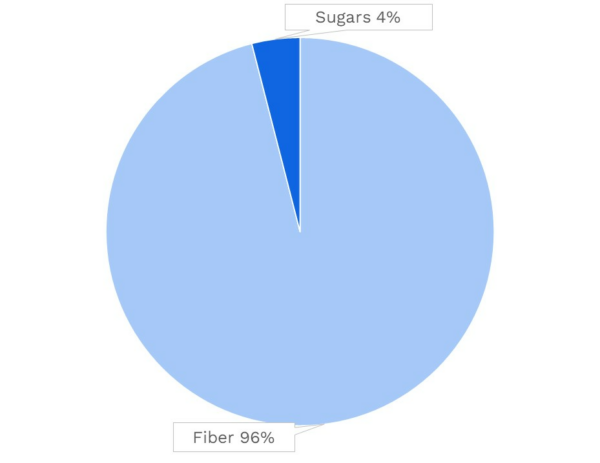
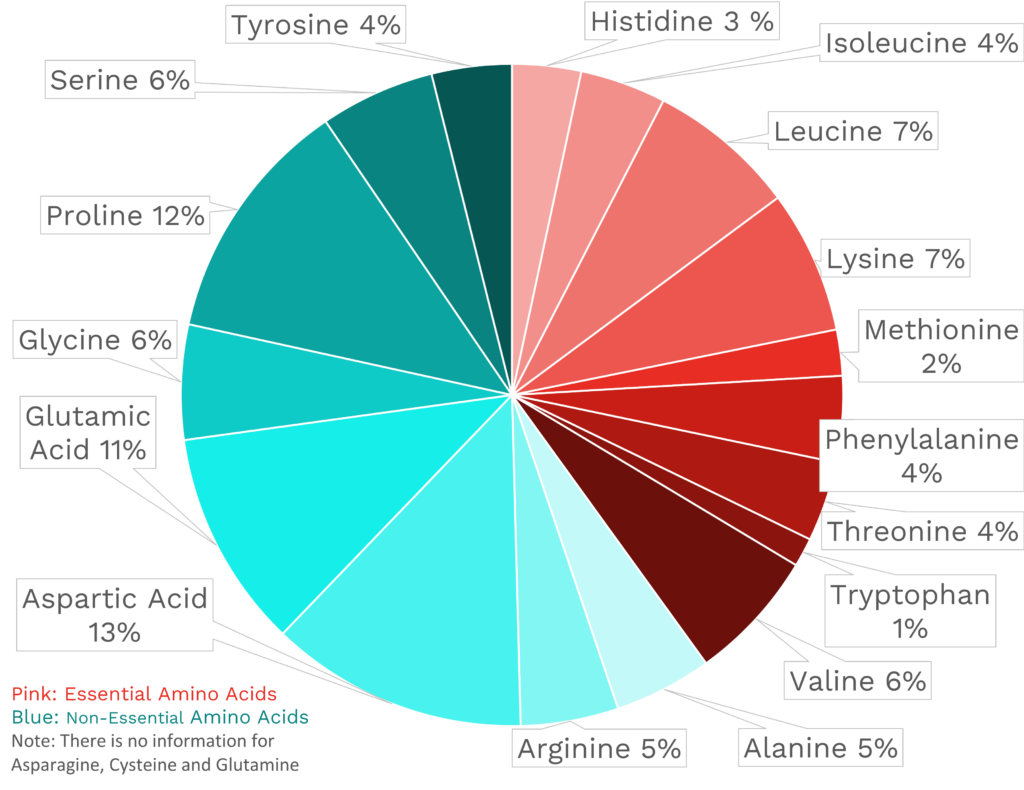

| VITAMINS | ||
|---|---|---|
| Vitamin A | 1.2 μg RAE | 0% DV |
| Vitamin B1 (Thiamin) | 1.7 μg | 0% DV |
| Vitamin B2 (Riboflavin) | 3.2 μg | 0% DV |
| Vitamin B3 (Niacin) | 0.1 mg | 1% DV |
| Vitamin B5 (Pantothenic Acid) | 0.0 mg | 1% DV |
| Vitamin B6 (Pyridoxine) | 12.3 μg | 1% DV |
| Vitamin B7 (Biotin) | 0.3 μg | 1% DV |
| Vitamin B9 (Folate) | 0.5 μg | 0% DV |
| Vitamin B12 (Cobalamin) | 0.0 μg | 0% DV |
| Vitamin C | 0.3 mg | 0% DV |
| Vitamin D (D2 + D3) | 0.0 μg | 0% DV |
| Vitamin E | 1.0 mg | 7% DV |
| Vitamin K | 2.4 μg | 2% DV |
| Choline | 0.9 mg | 0% DV |
| Myo-Inositol | ~ | ~ |
| CoQ10 | ~ | ~ |
| FUNCTIONAL FATS | ||
|---|---|---|
| MUFA | 0.0 g | 0% DV |
| ALA | 0.9 mg | 0% DV |
| EPA + DHA | 0.0 mg | 0% DV |
| CLA | ~ | ~ |
| Linoleic Acid | 0.0 g | 0% DV |
| MCT’s | 0.0 g | ~ |
| MINERALS | ||
|---|---|---|
| Calcium | 78.2 mg | 6% DV |
| Copper | 26.4 μg | 3% DV |
| Iodine | ~ | ~ |
| Iron | 0.6 mg | 4% DV |
| Magnesium | 4.7 mg | 1% DV |
| Manganese | 1362.3 μg | 59% DV |
| Phosphorus | 5.0 mg | 0% DV |
| Potassium | 33.6 mg | 1% DV |
| Selenium | 0.2 μg | 0% DV |
| Sodium | 0.8 mg | 0% DV |
| Zinc | 0.1 mg | 1% DV |
| PHYTONUTRIENTS | ||
|---|---|---|
| Carotenoids | 37.4 μg | ~ |
| Polyphenols | 928.2 mg | ~ |
| Phytosterols | ~ | ~ |
| Glucosinolates | ~ | ~ |
| Thiosulfinates | ~ | ~ |
| Betalains | ~ | ~ |
| AMINO ACIDS & PEPTIDES | ||
|---|---|---|
| Taurine | ~ | ~ |
| Ergothioneine | ~ | ~ |
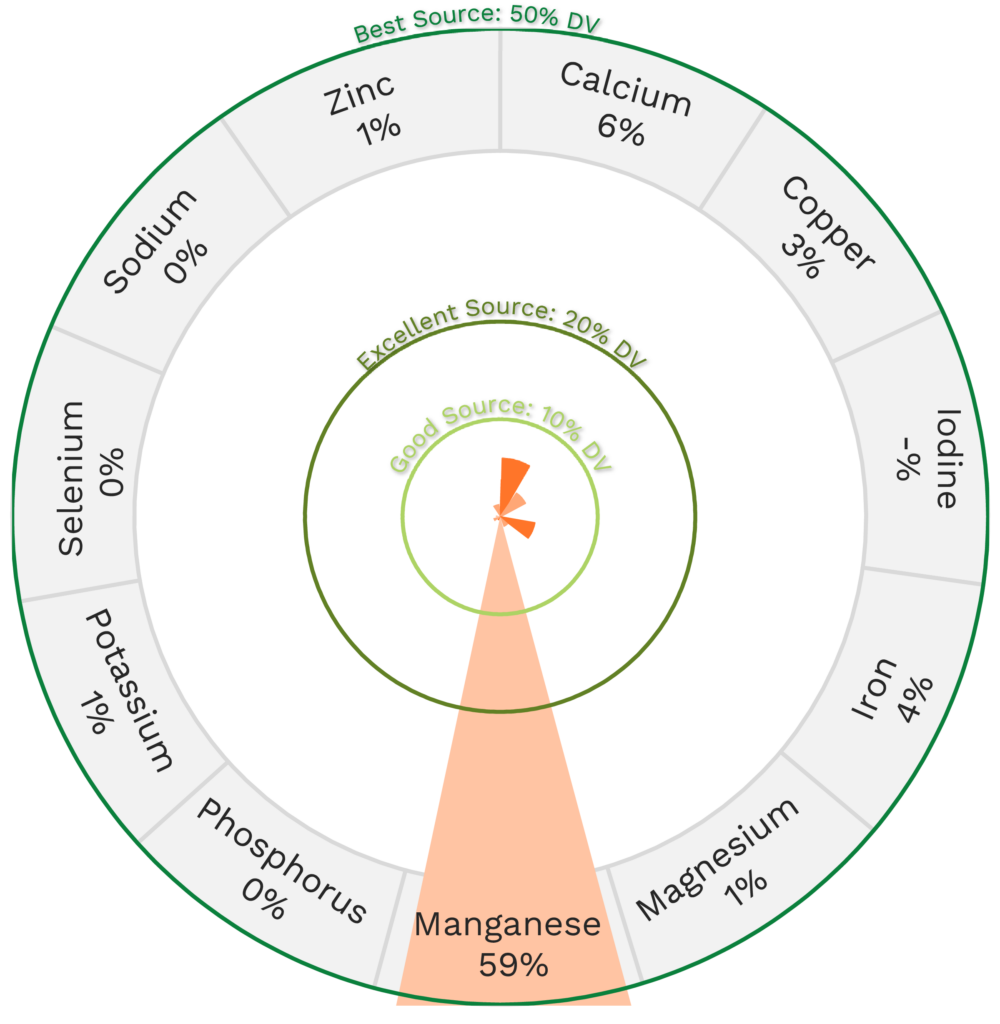
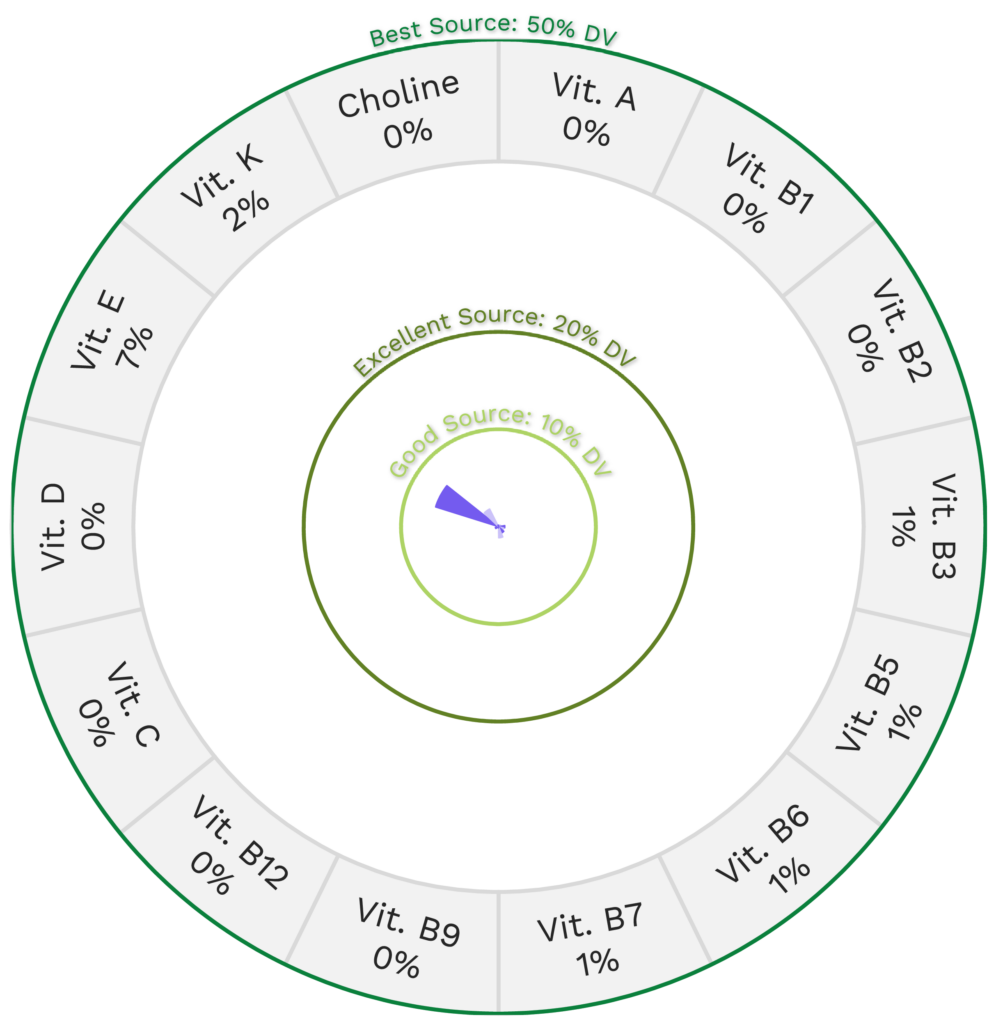
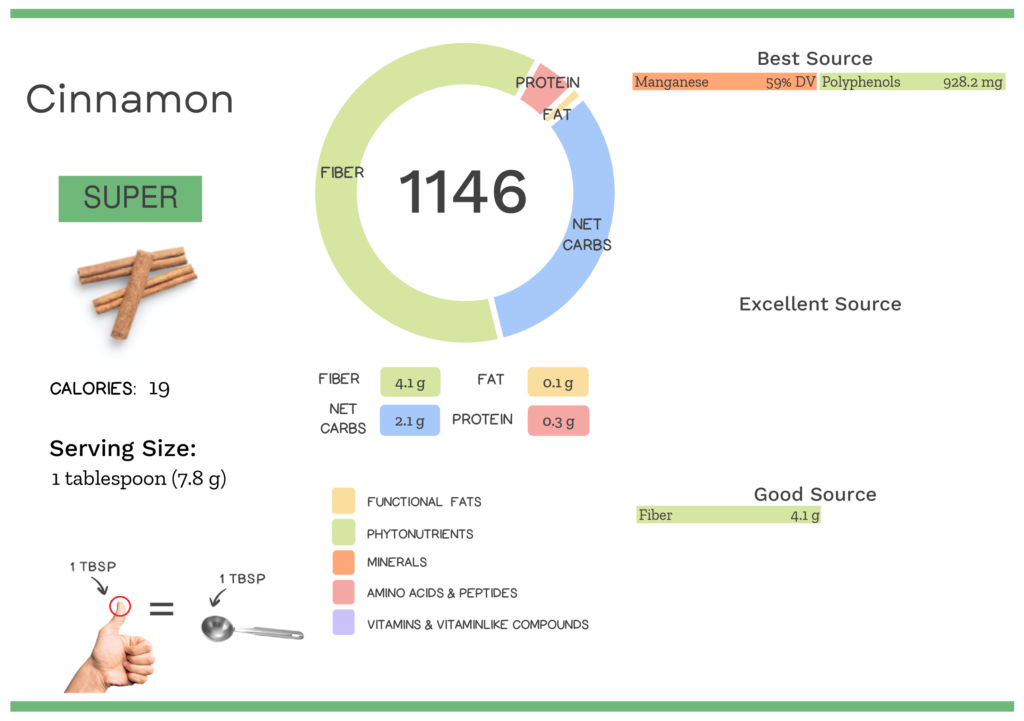
Did learning about cinnamon nutrients “spice up your life”? Maybe your friends will be impressed too!
Health Benefits of Cinnamon Nutrients
Let’s take a closer look at all of the best and excellent source of nutrients found in a 1-tablespoon serving of cinnamon and see how they benefit our health.
Cinnamon Provides 928.2 mg of Polyphenols
Cinnamon is a best source of polyphenols, providing 928.2 mg of polyphenols per 1-tablespoon serving!
Cinnamon is especially rich in cinnamic acid!
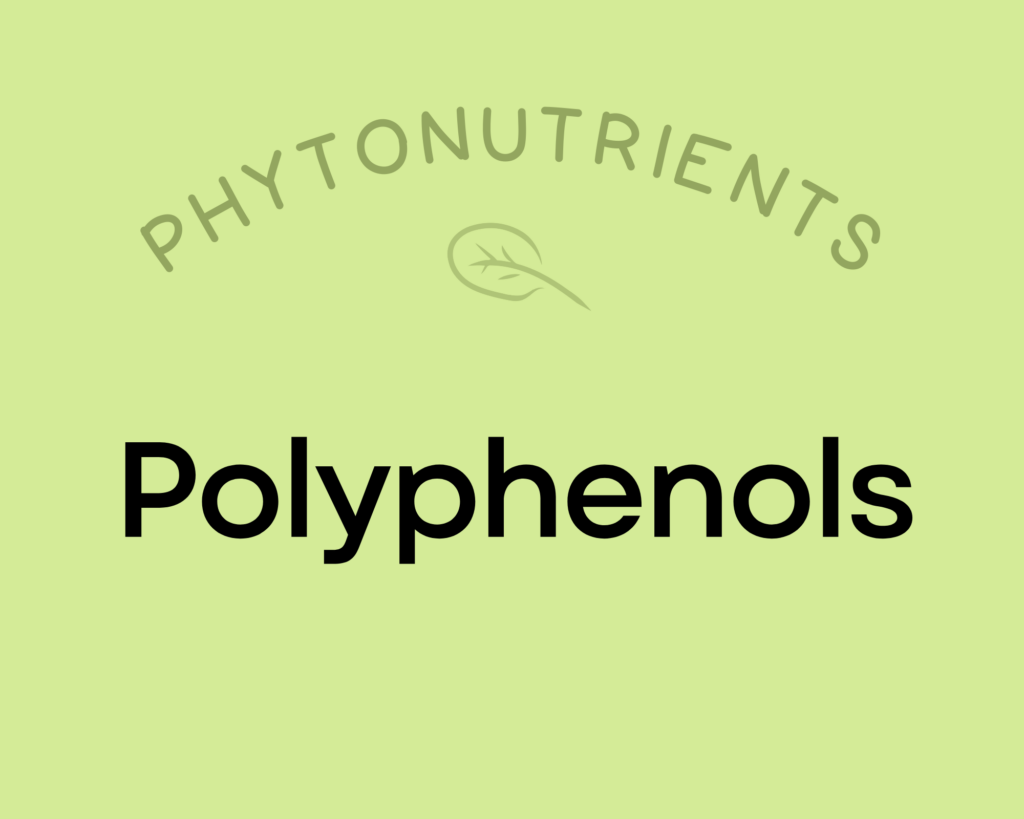
Polyphenols play a huge role in protecting against cancer, heart disease, diabetes, asthma, osteoporosis, neurodegenerative diseases, and other conditions associated with oxidative stress. In fact, a major reason foods like red wine and olive oil (as well as diets rich in both, such as the Mediterranean diet) show up as so beneficial may be due to their high polyphenol content! Along with chronic diseases, supplementing with polyphenols has been shown to protect against infections and reduce the signs of aging. Polyphenols exert their most potent effects by acting as antioxidants—preventing cellular damage by neutralizing hazardous oxygen radicals and improving cellular health as a result (which, in turn, benefits virtually every system in the body). As a result of their antioxidant properties, polyphenols also boost the immune system and protect against both chronic and acute diseases. In addition, polyphenols can help regulate enzyme function, stimulate cell receptors, modulate the functions of inflammatory cells (including T and B lymphocytes, macrophages, platelets, and natural killer cells), alter adhesion molecule expression, affect nerve cells and cardiac muscle cells, and exert antiviral effects. Learn more about polyphenols here.
Cinnamon Provides 59% DV Manganese
Cinnamon is a fantastic source of manganese, providing 59% of the daily value per 1-tablespoon serving!
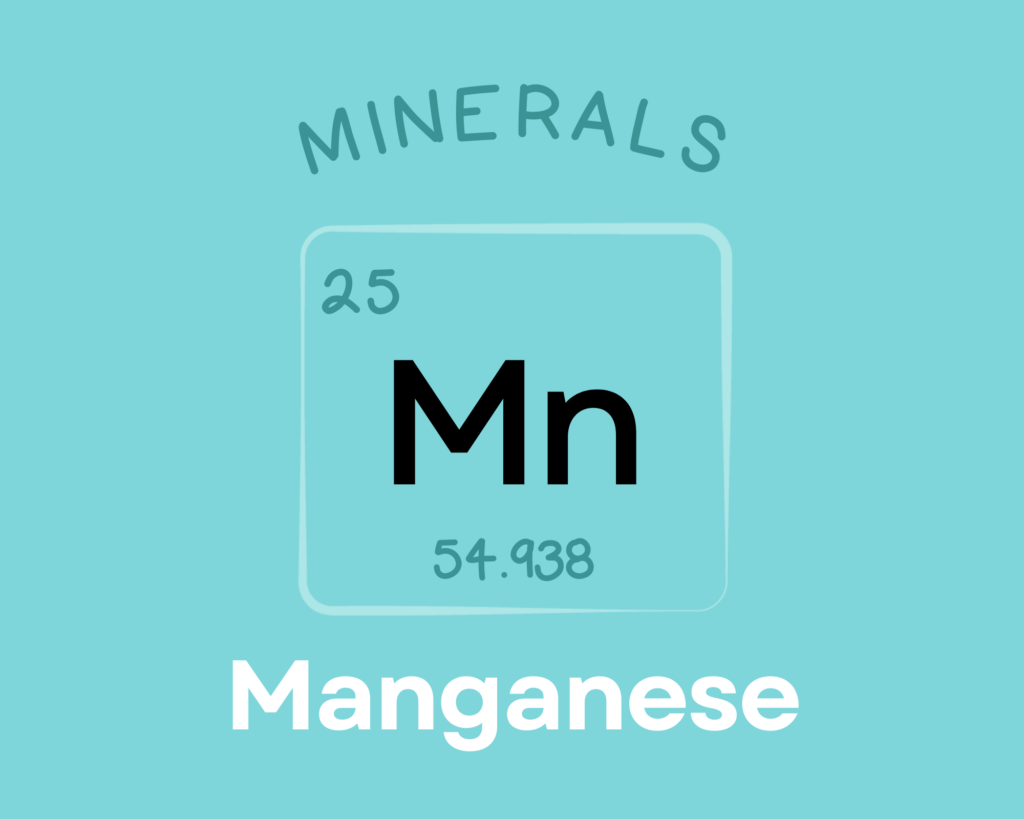
Manganese is an essential mineral that serves as a cofactor and component of numerous enzymes. Through these roles, it’s involved in carbohydrate metabolism, amino acid synthesis, gluconeogenesis, detoxification, lipid processing, free radical defense, bone and collagen formation, and wound healing. Although the research so far is limited, some evidence suggests that manganese can protect against osteoporosis and diabetes, and may even be involved in seizure disorders. Learn more about manganese here.
Want to know the top 500 most nutrient-dense foods?
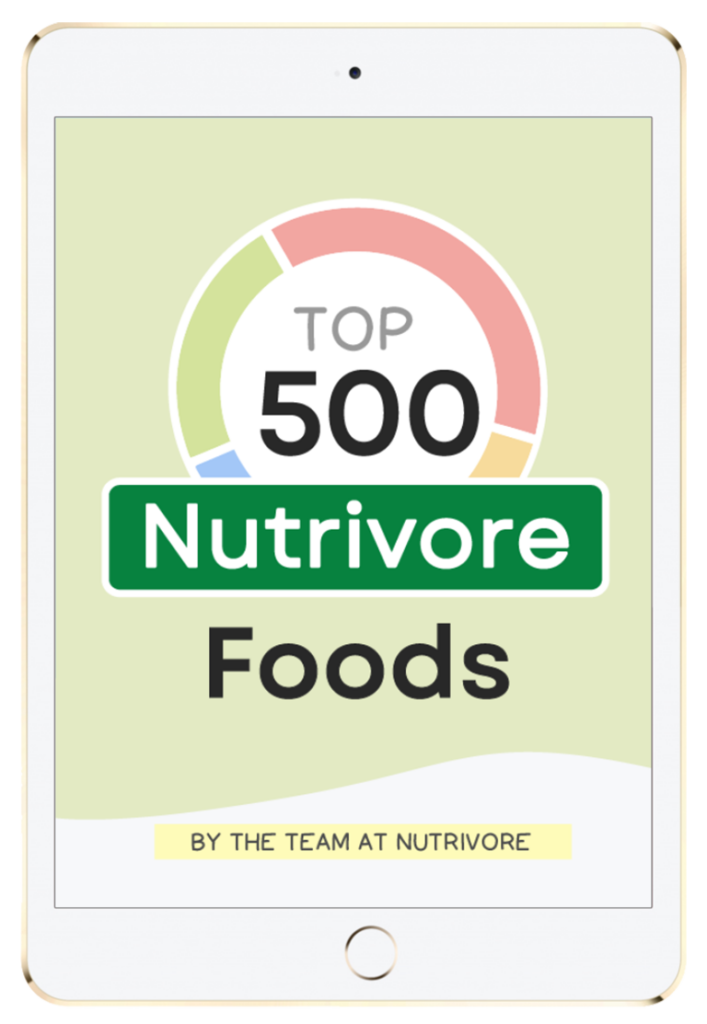
Top 500 Nutrivore Foods
The Top 500 Nutrivore Foods e-book is an amazing reference deck of the top 500 most nutrient-dense foods according to their Nutrivore Score. Think of it as the go-to resource for a super-nerd, to learn more and better understand which foods stand out, and why!
If you are looking for a quick-reference guide to help enhance your diet with nutrients, and dive into the details of your favorite foods, this book is your one-stop-shop!
Buy now for instant digital access.
How Much Cinnamon Should We Eat Per Day?
Not only do spices add flavor and color to foods, they also pack a phytonutrient punch that can boost our health!
The health benefits attributed to herbs and spices, and particularly their phytonutrient content and volatile oils, are incredibly vast. In general, herbs and spices have been shown to have powerful antioxidant activity, exhibit anti-cancer effects (especially due to polyphenols, terpenes, vanilloids, and organosulfur compounds), reduce inflammation (for example, basil, bay leaves, sage, thyme, licorice, and oregano have been shown to improve cytokine profiles), and reduce cardiovascular disease risk.
There is evidence from human clinical trials showing that adding spices and herbs to our diet can improve serum lipid profiles (HDL cholesterol, LDL cholesterol and triglycerides) as well as glycemic control, blood pressure, inflammation, and oxidative stress. For example, a 2022 study added a mere 6.6 grams per day per 2100 calories of herbs and spices (that’s about a teaspoon of seasonings throughout the whole day) to the diets of adults with risk factors for cardiovascular disease, with a crossover design comparing to a 3.3 grams of herbs and spices phase as well as a <0.5 grams herbs and spices phase. After four weeks consuming the higher level of herbs and spices, the participants had significant improvements in gut microbiome composition including growth of bacteria associated with reduced cardiovascular disease risk. A 2021 study by the same research group showed reductions in blood pressure after a single day of higher intake of herbs and spices. And a follow-up 2022 study showed reduced markers of inflammation after four weeks of the higher spice intake diet, including reduced fasting plasma IL-6 and postprandial plasma IL-1β, IL-8, and TNF-α. All in all, this makes a compelling case for aiming for a teaspoon of dried herbs and spices (or 1 tablespoon fresh) or more per day added to our meals! Learn more about herbs and spices here.
Studies show that cinnamon is effective for relieving menstrual cramps and nausea, helps reduce inflammation and rheumatoid arthritis symptoms, and can reduce insulin sensitivity and reduce fasting blood sugar in women with PCOS.
Since the health benefits attributed to spices (like cinnamon) are credited to the diverse array of phytonutrients and volatile oils found within different herbs and spices, it is important that we strive for variety when incorporating these foods in our diet. Not only when it comes to spices, but in general it’s always best to mix up the veggies you eat day to day (aiming for a wide variety of different vegetables and fruits throughout the week).
Easily track your servings of Nutrivore Foundational Foods!

The Nutrivore Weekly Serving Matrix
The Nutrivore Weekly Serving Matrix digital resource is an easy-to-use and flexible weekly checklist designed to help you maximize nutrient-density and meet serving suggestions of Nutrivore foundational foods, all without having to weigh or measure your foods!
Includes a 22-page instructional guide and downloadable interactive guides.
Buy now for instant digital access.
cITATIONS
Expand to see all scientific references for this article.
Phenol-Explorer: Ceylan cinnamon
USDA Food Central Database: Spices, cinnamon, ground
Watanabe T, Kioka M, Fukushima A, Morimoto M, Sawamura H. Biotin content table of select foods and biotin intake in Japanese. Int J Anal Bio-Sci. 2014. Vol 2(4):109-125.


